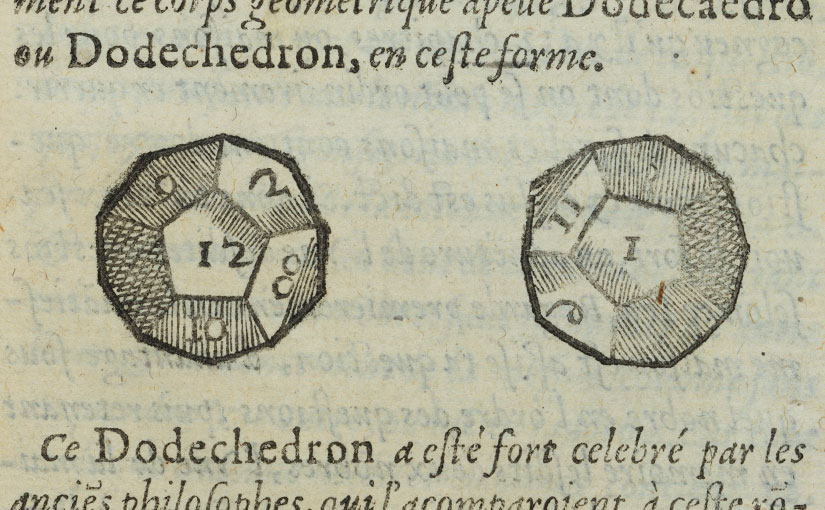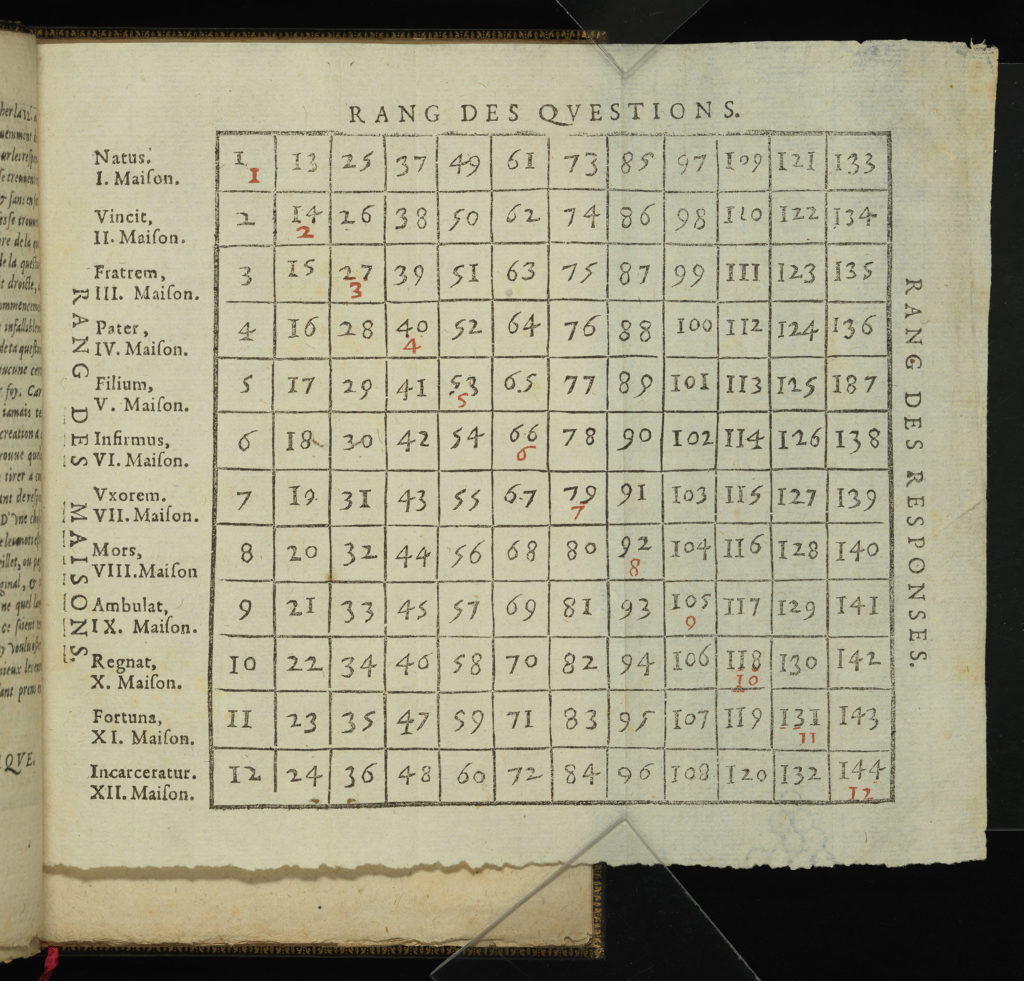by Eve Wolynes, Ph.D. candidate, Department of History, University of Notre Dame
 Special Collections’ spotlight exhibit for May, “Blasphemous Fun: Late Medieval and Early Modern Game of Chance and Fortune,” features a pair of medieval and Early Modern books on fortune-telling dice games: a modern facsimile of the Libro delle Sorti (The Book of Fates) and the Dodechedron de Fortvne.
Special Collections’ spotlight exhibit for May, “Blasphemous Fun: Late Medieval and Early Modern Game of Chance and Fortune,” features a pair of medieval and Early Modern books on fortune-telling dice games: a modern facsimile of the Libro delle Sorti (The Book of Fates) and the Dodechedron de Fortvne.
The original Libro delle Sorti, held at the Biblioteca Nazionale Marciana in Venice, was written in 1482 by Lorenzo Spirito Gualtieri in Perugia and was illustrated by Umbrian painters in the circle of Pietro Perugino and the young Raphael. Its pages contain a guide to using three six-sided dice to divine the answers to any of twelve questions about the future, in a somewhat comically roundabout method.
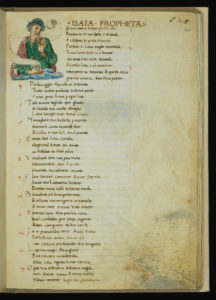 First, the reader chooses a question, which then points them to a “king” — an image of one of twelve historical and biblical figures, including Priam, last king of Troy, and King Solomon. These kings then instruct the reader to a “sign” — a table associated with celestial bodies, animals and mythical figures, such as a unicorn, a scorpion, or the moon. These tables provide combinations of dice rolls — whatever the reader rolls, they find that combination on the table, which then directs to a “sphere” of different celestial signs and their Roman Gods — such as the sphere of the Sun (shown in the exhibit)
First, the reader chooses a question, which then points them to a “king” — an image of one of twelve historical and biblical figures, including Priam, last king of Troy, and King Solomon. These kings then instruct the reader to a “sign” — a table associated with celestial bodies, animals and mythical figures, such as a unicorn, a scorpion, or the moon. These tables provide combinations of dice rolls — whatever the reader rolls, they find that combination on the table, which then directs to a “sphere” of different celestial signs and their Roman Gods — such as the sphere of the Sun (shown in the exhibit)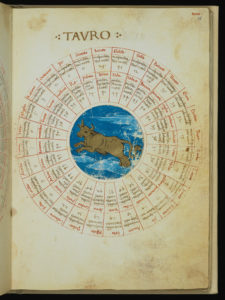 or Taurus (shown here), but also the sphere of Cancer, Capricorn, Mercury, Apollo and Mars. These spheres finally direct to a “list” of decided fates, organized according to the prophets of Christianity. The rather convoluted links of the game intertwine Roman mythology, biblical figures and astrology in its pages to tell a story of Italian medieval culture that dipped into multifaceted heritages — Roman and Catholic pasts interlinked, with astrological stars and theological heavens brought to bear on earthly concerns.
or Taurus (shown here), but also the sphere of Cancer, Capricorn, Mercury, Apollo and Mars. These spheres finally direct to a “list” of decided fates, organized according to the prophets of Christianity. The rather convoluted links of the game intertwine Roman mythology, biblical figures and astrology in its pages to tell a story of Italian medieval culture that dipped into multifaceted heritages — Roman and Catholic pasts interlinked, with astrological stars and theological heavens brought to bear on earthly concerns.
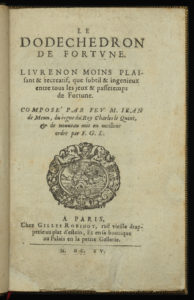 The Dodechedron, meanwhile, is attributed to medieval poet French Jean de Meun, famous for his scandalous and obscene Roman de la Rose, and earliest manuscripts date to roughly the first quarter of the 14th century. The work regained popularity as a printed text in the late 16th and early 17th century – as demonstrated in our 1615 printed edition, and found itself translated into English around the same time. It describes a game of dice played using a 12-sided die connected to the twelve signs of the zodiac in order to predict the future.
The Dodechedron, meanwhile, is attributed to medieval poet French Jean de Meun, famous for his scandalous and obscene Roman de la Rose, and earliest manuscripts date to roughly the first quarter of the 14th century. The work regained popularity as a printed text in the late 16th and early 17th century – as demonstrated in our 1615 printed edition, and found itself translated into English around the same time. It describes a game of dice played using a 12-sided die connected to the twelve signs of the zodiac in order to predict the future.
Twelve repeats itself frequently throughout the game, which requires that the player choose one of twelve questions from twelve different “houses” (144 questions total) about a wide breadth of topics from a child’s future health to whether a judge in a court case would honestly uphold to justice. Readers then pick a house and a question, correlate those numbers to a 12-by-12 grid and roll a 12-sided die to count out the final tally of their numbered fortune from a list of answers. The repetition of 12 places the Dodechedron into a tradition of spell books that relied upon mathematical calculations founded on astrological divination to calculate the future.
Dice games were nominally frowned upon in the Middle Ages — and gambling with dice barred to members of the church, though that didn’t stop them — and the connections between chance determining the future and pagan practices of divination through dice meant that these games bordered on blasphemous and played on the boundaries of “everyday magic.” Indeed, dice games were often paired with blasphemy as players prayed to God, Mary and saints in the lead up to their rolls — and cursed them when things didn’t go their way. In the 13th century the King of Castile, Alfonso X, attempted to regulate dice games in his Ordinances of Gaming Parlours, and began with punishments for various levels of blasphemy during such games, up to having part of one’s tongue cut off. In discussions of dice games and gambling, the worship of Decius (dice) was often put in contrast with worshipping Deus (God) to characterize such games as a form of pagan or satanic ritual, as referenced in the 14th century Manuale Sacerdotum by John Mirk, preaching that, “He [who gambles with dice] makes of the gaming table an altar for himself, upon which he offers up the goods of the Church to the Devil.” [1]
Fortune-telling games, rather than gambling with dice, however, escaped complete censure by the medieval church and remained closer to the practice of divining “Lots”, also called Sortes Sanctorum (Fates of the Saints), through bible verses and the practical application of astrology, which were both frequently interlocked as such games referenced astrology and the stars throughout their manuals, and games often instructed their players to offer prayers or recite psalms before casting their dice.
The advent of Protestantism after the first half of the 17th century in Europe coincided with a heightened lockdown on fortune-telling as a form of magic that contradicted the omnipotence of God wherein any event was not chance but a direct reflection of personal virtue in God’s eyes. Still, the temptations of chance, future and fortune were hardly daunted by whispers of blasphemy — dice games and fortune telling continued in popularity well into the early modern era and beyond, and live on in our gambling dens and friendly tabletop games today.
[1] Rhiannon Purdie, “Dice-games and the blasphemy of prediction,” in Medieval Futures: Attitudes to the Future in the Middle Ages, 2000. P. 178.
